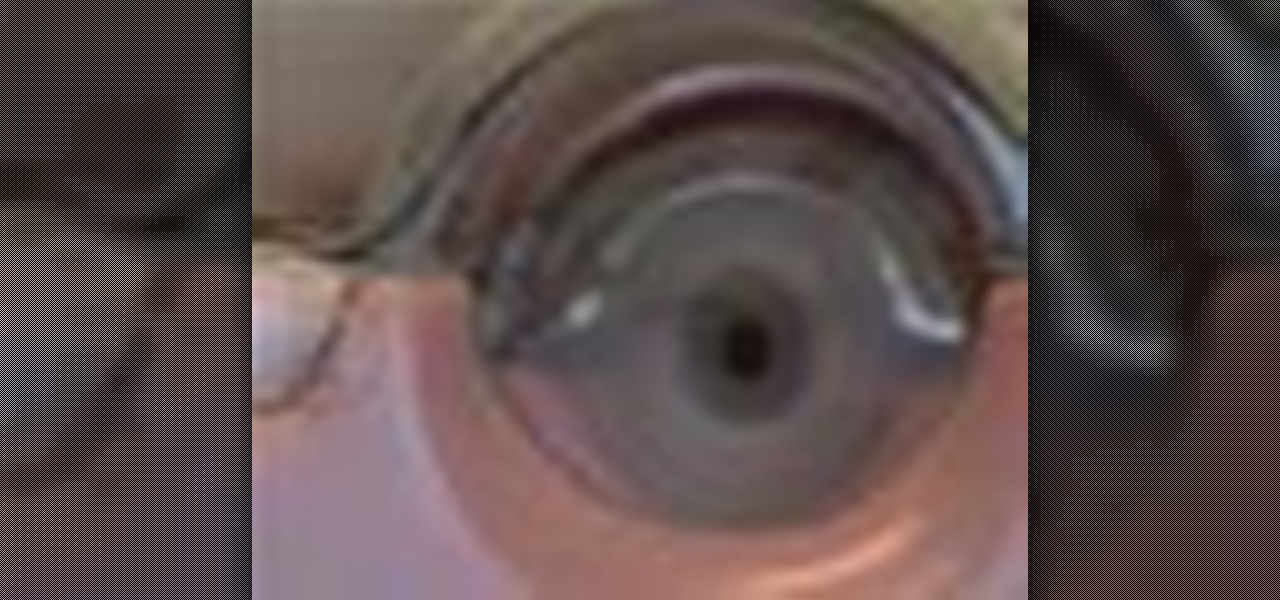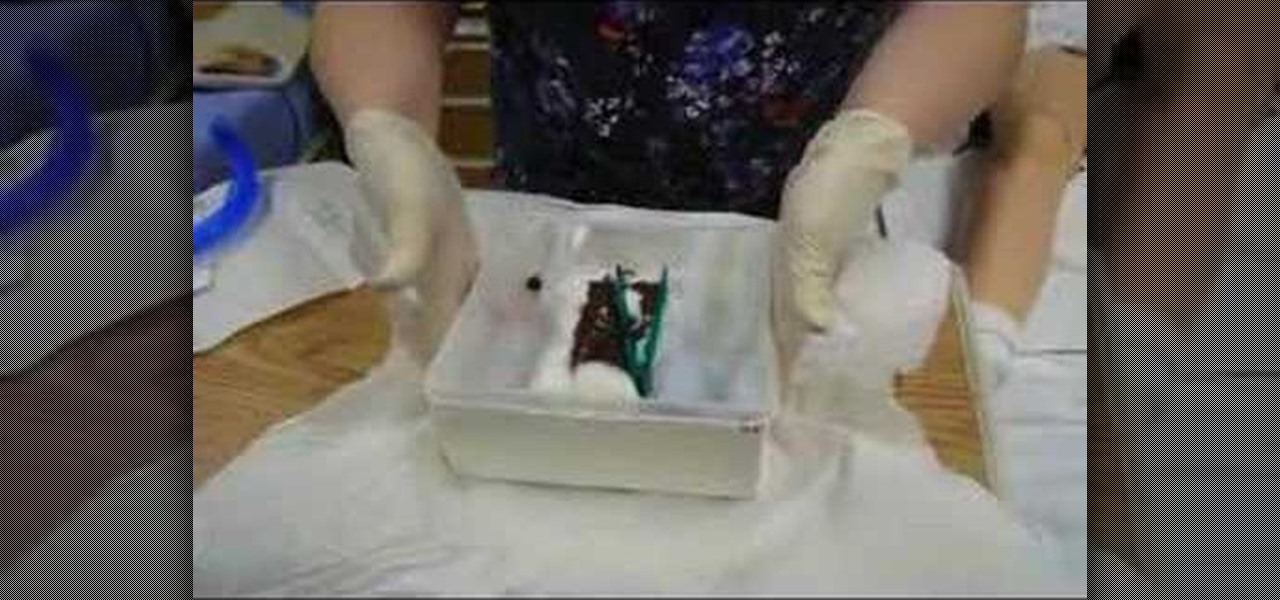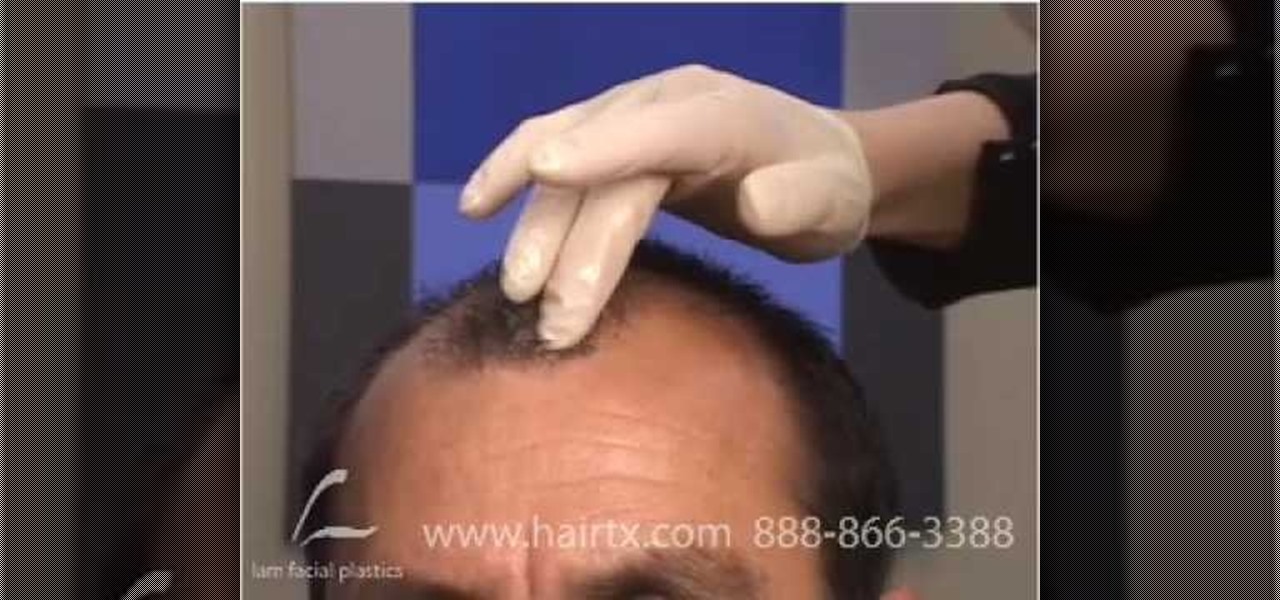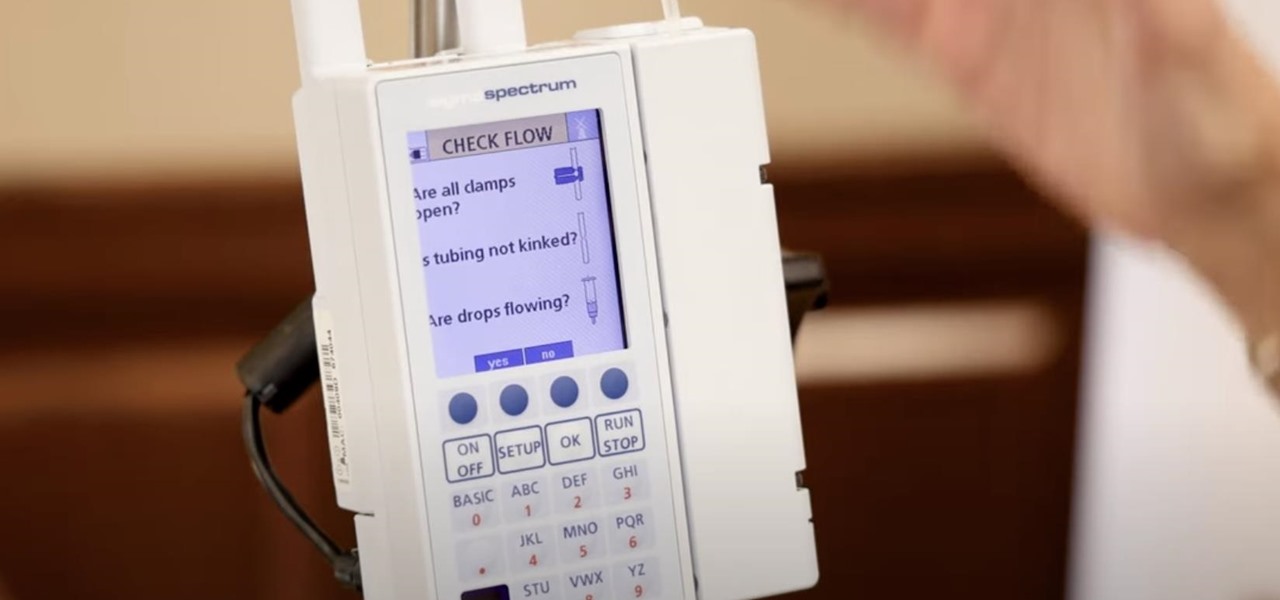Hot Medical Diagnosis & Procedures Posts


How To: Remove an intrauterine device
This instructional medical how-to video gives a step-by-step instruction on how to remove an intrauterine device (IUD) with the help of a licensed health care practitioner.

How To: Draw blood with a standard venepuncture procedure
This medical instructional how-to video demonstrates the proper way to perform a standard venepucture procedure on a patient. Before drawing blood from any patient it is always good to identify your patient. Wrap the band at the top of the arm and use alcohol to clean the area. Watch to learn how to perform a standard venepuncture procedure.

How To: Draw blood with the butterfly method
If you are having a difficult time drawing a patients blood, you might want to considering doing the butterfly procedure. Watch this instructional medical how-to video to learn the proper way of drawing in blood with this method. The butterfly procedure involves drawing blood from the back of the hand. Start by placing a band around the wrist, palpating the back of the hand and identifying the direction of the veins.

How To: Prepare a peripheral blood smear and microhematocrit
This instructional medical how to video demonstrates how to prpeare a blood smear and microhematocrit. To prepare a peripheral blood smear and a microhematocrit you will need an absorbent towel, gauze, patient blood sample, glass slides and capillary tubes. Always wear gloves, eye shields and a lab coat when handling blood.

How To: Make chiropractic adjustments
Chiropractic adjustments offer many benefits, both long and short term. Find out if you need an adjustment with this free chiropractic video series.

How To: Detect prostate problems
Learn what to expect from a prostate exam, signs and symptoms of prostate cancer, how to promote a healthy prostate through diet and supplements and more with expert prostate health tips in this free men's health care video series. Detect prostate problems - Part 1 of 14.

How To: Perform a testicular cancer exam
Learn how to do testicular cancer self exams with expert tips on the signs of testicular cancer in this free men's health video series. Perform a testicular cancer exam - Part 1 of 12.

How To: Learn about bizarre medical mishaps
Here are several bizarre occurrences that are believed to have happened all over the world. You gotta hear about these!

How To: Identify the symptoms of a stroke
Learn how to identify a stroke victim, what a stroke is, how it affects your body, how to test someone who might be suffering from a stroke, and tips for stroke prevention with expert medical tips in this free online health care video series.

How To: Use a nebulizer
Learn how to use a nebulizer, or atomizer, to vaporize liquid medicine and use it with children with expert medical tips in this free vaporized medicine video series.

How To: Take blood pressure
High blood pressure is a leading cause of heart disease and strokes. Learn how to take blood pressure with tips from a doctor in this free health video series.

How To: Diagnose sleep disorders
Sleep disorders affect people throughout the world. In some cases they can become hazardous or extremely harmful if not treated properly. Learn more about sleep disorders and how to treat them from our medical expert in this free video series.

How To: Insert a Foley catheter in a male
This how to video demonstrates how to do a male Foley catheter insertion. Before beginning any catheterization procedure make sure to properly identify the patient, wash your hands, and that all the supplies are handy. Watch and learn how to properly insert a Foley catheter in a man. This medical how-to video is intended for medical students and professionals.

How To: Perform a breast self exam
1 in 9 women will get breast cancer at some point in their lives, and at least a third of women will not self-check their breasts. Early diagnosis is essential in treating breast cancer, and that’s where monthly self-checks come in. If you’re not sure where to start – don’t worry! Dr Dawn Harper’s guide will give you advice on exactly how to self-check your boobs. Watch this video tutorial and learn how to self examine breasts for any lumps or possible cancer.

How To: Diagnose and treat hemorrhoids
Around half the UK population will develop piles at some point in their life. In this exclusive guide, Dr Jessen explains the causes of hemorrhoids and dispels some myths along the way. He also discusses treatment options – from over-the-counter creams to surgery – and advises on the best way to prevent piles occurring in the first place. Watch this video tutorial and learn how to diagnose and treat hemorrhoids.

How To: Treat urinary incontinence
It is estimated that 6 million people in the UK suffer from urinary incontinence, and it is twice as common in women as men. In this exclusive guide, Dr Harper explains the causes of this surprisingly common, but distressing, condition and advises on the exercises, techniques and surgery that can help alleviate the problem. Suffering in silence is the only option no longer available. Watch this video tutorial and learn how to treat urinary incontinence.

How To: Diagnose and treat warts
At any given time, about 10% of the UK population have warts, which costs the NHS a staggering £40m a year in treatment. In this exclusive guide, Dr McKenna discusses the various types of wart – from the common wart to the genital wart – and advises on both preventative measures and treatment options available, to ensure that these little blighters will blight you no more. This video tutorial shows how to diagnose and treat warts.

How To: Diagnose and treat athlete's foot
If you spend a lot of time with your feet crammed into sweaty trainers, then you might be familiar with Athlete’s Foot. In this exclusive guide, Dr Harper discusses the symptoms of this common fungal infection of the skin on the feet, and how it is spread. She also advises on the quick and effective over-the-counter treatments available, and offers practical tips to ensure that your feet don’t mature into something that would feel more at home on a cheese board! Watch this video tutorial and ...

How To: Check moles for potential skin cancer
You might not believe it, with our experience of the great British weather, but more people die of skin cancer in the UK than in Australia. In this exclusive guide, Dr Jessen stresses the importance of being familiar with our skin and any moles we might have, and provides simple and effective ways to check ourselves. He also advises on the safest way to enjoy the sun and dispels some myths along the way. You can’t catch the sun on a cloudy day? Think again. Watch this video tutorial and learn...

How To: Treat hirsuitism or excessive female facial hair
Women who suffer from excessive facial hair (or hirsuitism) can feel extremely self-conscious, but the condition is not uncommon and affects up to 15% of women. In this exclusive video guide, Dr Harper discusses the symptoms and causes of this condition, as well as the best treatment options available. Excessive facial hair can be embarrassing, but there are plenty of ways to remove it, either temporarily or on a more permanent basis. Watch this video tutorial and learn how to treat hirsuitism.

How To: Use a BD Quikheel Safety Lancet on an infant
BD Quikheel Safety Lancet The BD Quikheel Lancet is a safety-engineered product designed for heel sticks on infants and premature babies. It features a sweeping surgical blade that permanently retracts after creating an incision. Additionally, it offers a tapered window providing the healthcare worker with the ability to accurately position the lancet.

How To: Use the BD Genie Safety Lancet blood sampler device
Check out this video tutorial to see how to use the BD Genie Safety Lancet blood sampler device. BD Genie Lancets are high quality, safety-engineered, single-use capillary blood sampling devices. They offer a permanently retractable blade or needle feature that minimizes the possibility of injury or reuse. BD offers a full range of blade depth and needle gauges for sufficient blood volume in multiple sample requirements. All Genie's can be used in conjunction with BD Microtainer Tubes.

How To: Transfer blood specimens with the BD Transfer Device
Check out this video tutorial to see how to tansfer blood specimens with the BD Blood Transfer Device.

How To: Collect blood with the BD Vacutainer Eclipse Needle
Check out this video to see how to collect blood with the BD Vacutainer Eclipse Blood Collection Needle.

How To: Collect blood with the BD Vacutainer Safety-Lok
Check out this video tutorial to see how to collect blood with the BD Vacutainer Safety-Lok Blood Collection Set.

How To: Perform an endoscopic diverticulostomy with myotomy
This medical how-to video demonstrates how to perform a endoscopic Zenker's diverticulostomy with cricopharyngeal myotomy. Watch and learn how it is done. This Diet & Health videos is intended for medical students and patients who will be have this procedure done.

How To: Fix smile lines in plastic surgery
Smile lines in the face can get deeper as you age. In this medical how-to video Dr. Samuel Lam explains how these lines can be fixed in plastic surgery. Watch and learn more about plastic surgery procedures.

How To: Remove scabs after a hair transplant a comb
This how to video is a quick demonstration that shows how to remove scabs after a hair transplant. Ensure that the patient does not feel any pain by applying KY Jelly to the scabs prior to removal. Slightly massage it into the scab to moisten and detach the scab with a comb.

How To: Use Botox for jaw reduction
Botox is commonly used to reduce the appearance of wrinkles in the forehead area. But Botox for your jaw and neck? In this how to video Dr. Samuel Lam explains how to use Botox to reduce the jaw. Often times people with wider jaws seek out this popular procedure.

How To: Perform a traditional surgical cricothyrotomy
This medical how-to video demonstrates an open emergency cricothyrotomy. A cricothyrotomy is an emergency incision made through the skin and the cricothyroid membrane. This emergency procedure is performed to ensure that a patient is receiving air. Watch and learn how this procedure is performed. This video is intended for medical students only.

How To: Perform a cricothyrotomy in an emergency room
This medical how-to video demonstrates an open emergency cricothyrotomy. A cricothyrotomy is an emergency incision made through the skin and the cricothyroid membrane. This emergency procedure is performed to ensure that a patient is receiving air. Watch and learn how this procedure is performed in an emergency room. This video is intended for medical students only.

How To: Perform an endotracheal intubation
This medical how-to video is a presentation detailing an endotracheal intubation. Watch and learn the proper technique for intubating a patient. This medical video is intended for nursing and health related students.

How To: Dissect aortic lymph nodes with a robotic arm
This medical how-to video demonstrates a bilateral lymph node dissection in a patient with endometrial cancer using the da Vinci system with the HD optical system. The HD optical system allows surgeons to perform more precise anatomical dissections with enhanced dexterity. Watch and learn how a dissection of a lymph nodes is performed on a patient. This surgical video is intended for medical students.

How To: Perform a hysterectomy with a da Vinci robot
This medical how-to video details a robotic assisted hysterectomy in a patient with early stage endometrial/uterine cancer. Anatomy of the pelvis and the technique of a robotic hysterectomy is demonstrated. Watch and learn the surgical techniques used to performed a robotic hysterectomy on a patient using a da Vinci System. This surgical video is intended for medical students.

How To: Dissect a lymph node with a laparoscopic technique
This medical how-to video details a laparoscopic extraperitoneal aortic lymph node dissection. Watch and learn how to perform this surgical procedure on a patient. This surgical video is intended for medical students.

How To: Dissect a left aortic lymph node with a robotic arm
This medical how-to video details a robotic left aortic lymph node dissection in a patient with endometrial cancer using the Standard da Vinci system. The dissection on the right side of the aorta has been completed and the anatomy is outlined. The dissection on the left side of the aorta is highlighted in this video. Watch and learn how a dissection of a lymph node is performed on a patient. This surgical video is intended for medical students.

How To: Listen for breath sounds through chest auscultation
Lung auscultation is an important part of diagnosing and treating lung conditions. This medical how-to video shows you how to perform a lung exam on a patient's chest. Use a stethoscope to listen for normal and irregular breath sounds that a patient might have.

How To: Listen for breath sounds through back auscultation
Lung auscultation is an important part of diagnosing and treating lung conditions. This medical how-to video shows you how to perform a lung exam on a patient's back. Use a stethoscope to listen for normal and irregular breath sounds that a patient may have.

How To: Perform a cardiac auscultation on a patient
Cardiac auscultation is an important part of diagnosing and treating heart problems. This medical how-to video shows you how to perform a cardiac auscultation with a stethoscope. Begin with the diaphragm which allows higher pitched sounds to be heard. Follow up with the bell side to listen for lower pitched sounds.

How To: Rehabilitate knee post-surgery with physical therapy
After knee surgery, the knee is usually stiff with reduced range of motion because of swelling in that region. In this instructional video, a physical therapist explains how to get the knee back to its best following surgery with rest, exercise and physiotherapy.







